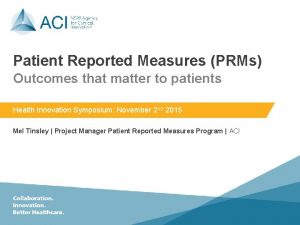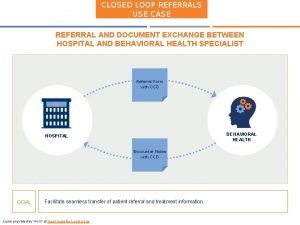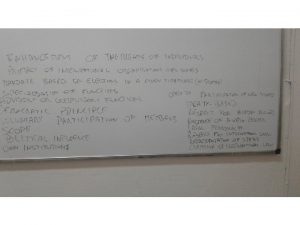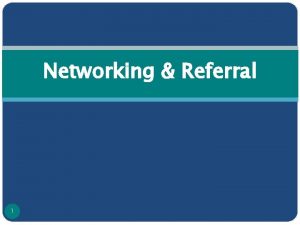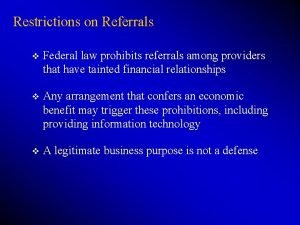Types of referrals Health and care organisations need






- Slides: 6

Types of referrals Health and care organisations need a referral system to access their services

When people are unwell or need to use health, social care and early years services they have to arrange to meet the practitioners involved. This is called gaining access to services. • Health, social care and child care services must ensure fair access to services. Why? • Different services are organised and delivered differently. Why? • To access some services it is necessary to be referred, usually 1 of 3 main methods of referral are used.

Self-referral Self referral; where an individual makes the decision to seek help from services and contacts the service independently. • Eg making an appointment with a GP or dentist yourself

Professional referral; where one health or social care professional contacts another professional on behalf of a service user because that service user needs a specialist consultation • E. g. when a GP refers patient to the Health advise on behaviour. a Visitor for managing a child’s

Third-party referral Third party referral is when a friend or relative contacts service on someone else’s behalf. Perhaps the reason is because the person is housebound and cannot access the service independently or maybe because there is a worry over abuse or someone’s mental health. • E. g when a neighbour rings the Police due to hearing violence next door.

Implementation of the Equality Act 2010 Ensuring each individual has equal access to services, regardless of the 9 protected characteristics…. . Which are…?

